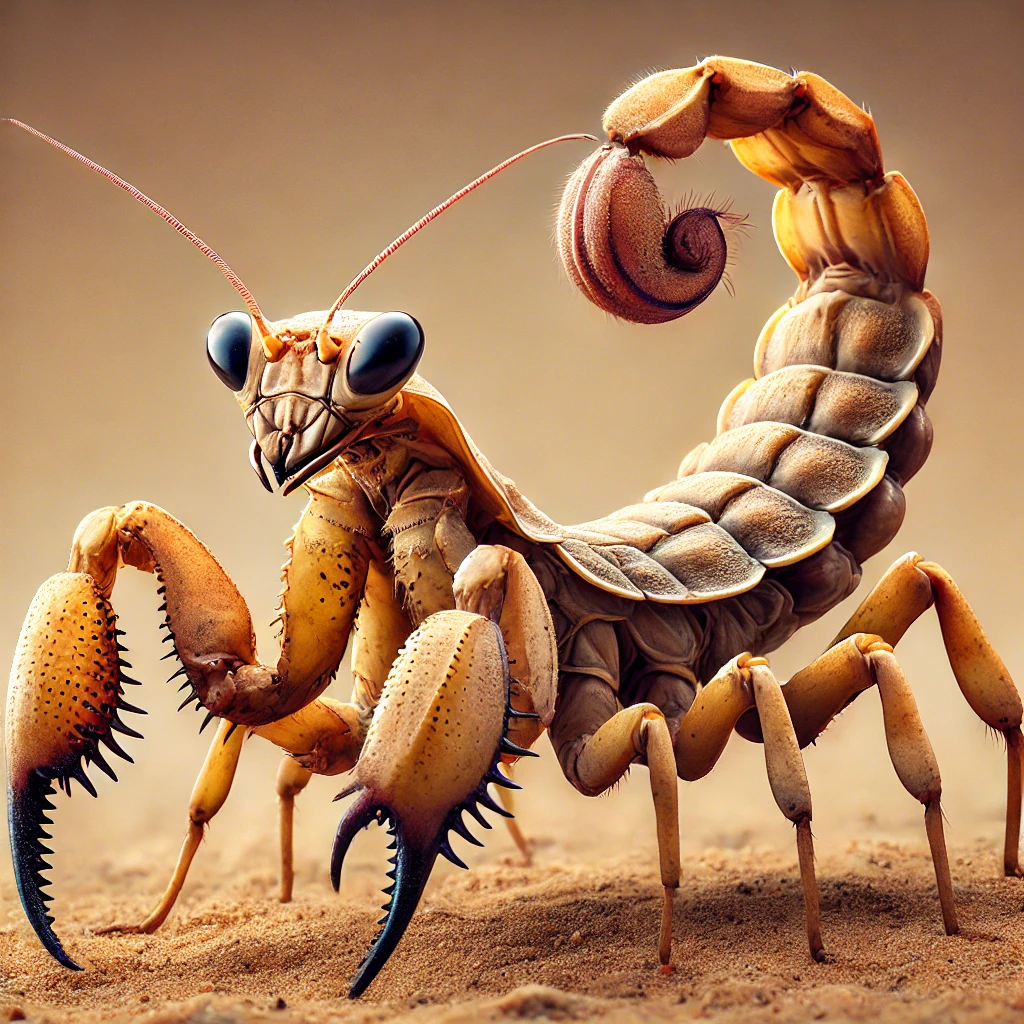Taxonomy:
- Kingdom: Animalia
- Phylum: Arthropoda
- Class: Insecta
- Order: Mantodea
- Family: Scorpiidae
- Genus: Scorpiomantis
- Species: S. morsus
Description:
Scorpiomantis morsus is a unique predatory species indigenous to the arid regions of the Canadian Expanse, particularly thriving in the British Columbia and Nunavut Sectors. It exhibits a fascinating blend of characteristics from both scorpions and mantises.
Physical Characteristics:
- Body: The body resembles that of a mantis, providing agility and speed for both hunting and evasion.
- Head: The head is similar to that of a mantis, with large, compound eyes providing excellent motion detection.
- Limbs: The front limbs are powerful and spiked, adapted for grasping prey, much like a mantis.
- Tail: A long, segmented tail ends in a venomous stinger, akin to a scorpion, capable of delivering a potent toxin to subdue prey or defend against threats.
Behavior:
Scorpiomantis morsus is a solitary predator, relying on its excellent sense of smell and hearing to locate prey due to its relatively poor vision. It is primarily nocturnal, using the cover of darkness to hunt effectively.
Diet:
This species is carnivorous, feeding on smaller insects, rodents, and occasionally small birds. Its venomous sting helps it immobilize prey swiftly.
Ecological Role:
As a top invertebrate predator, S. morsus plays a crucial role in controlling the population of other insects and small animals, maintaining ecological balance.
Human Interaction:
- Domestication: While challenging, they can be domesticated and trained for hunting purposes by skilled handlers.
- Edibility: Their flesh is rich in protein, and when properly prepared, they are considered a delicacy in certain cultures within the Canadian Expanse. However, caution is advised due to their venomous sting.
Conservation Status:
Currently, Scorpiomantis morsus is not considered endangered. However, habitat destruction and climate change pose potential threats to their population in the long term.
This species’ unique blend of characteristics makes it a fascinating subject of study for entomologists and a valuable asset in certain cultural cuisines and practices.

